What connection would a relatively remote mid north region of native vegetation have with my own garden?

On a return trip from the Flinders a few years ago we stopped for some refreshment in Eudunda and just out of curiosity visited their local historical society/museum in the main street. A wonderful emporium of the town’s history, we could have spent the rest of the day in there, but were keen to ask the friendly staff if they knew of any local conservation parks/reserves that reflected examples of local native vegetation of the region. They mentioned Peep Hill might be worth a look…a peep!
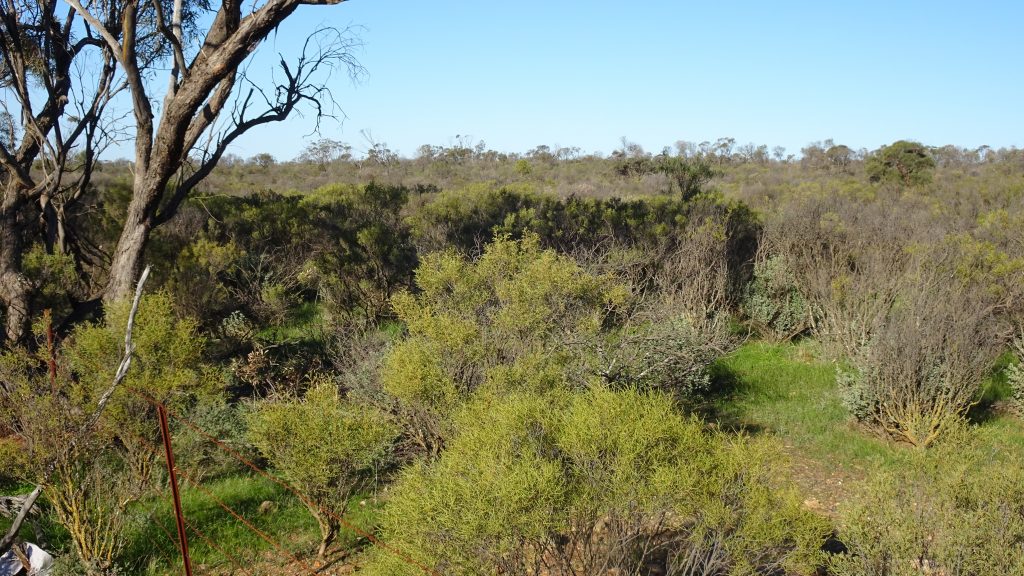
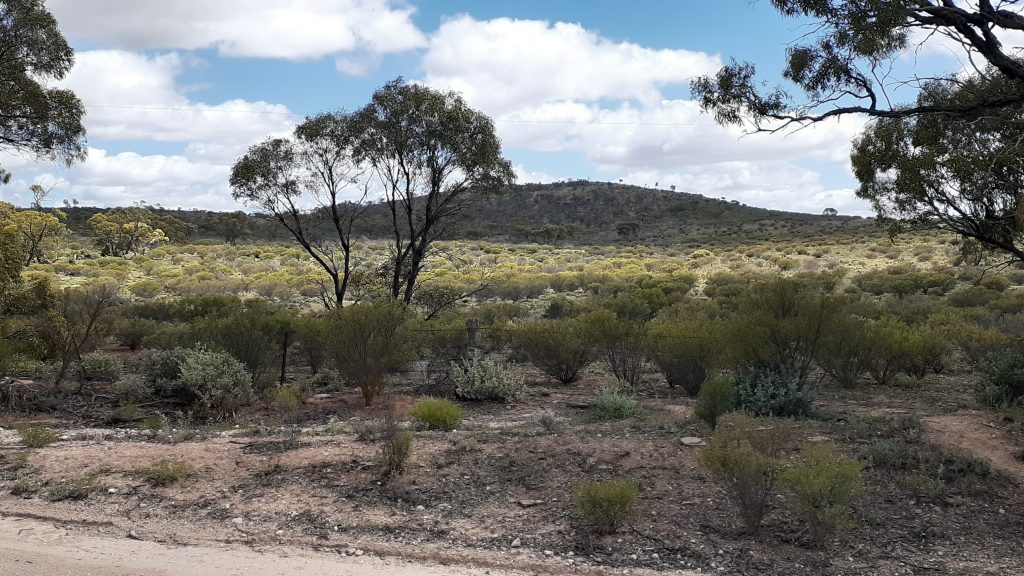
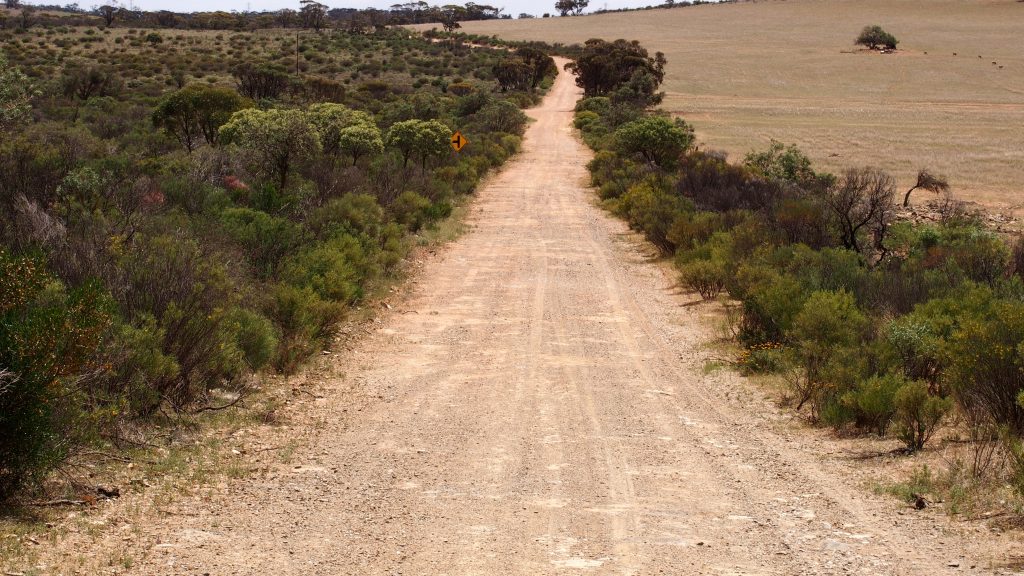
Peep Hill is a small region of privately owned, remnant vegetation located just outside Eudunda in the mid north. The area is recognised for a rare and nationally endangered plant species, that being Dodonaea subglandulifera or more commonly known as the Peep Hill hop bush. It is a South Australian endemic plant species. What is interesting about this plant is that I have had it growing in my front garden in Tea Tree Gully for many years and was unaware of its endangered status! In my urban setting Dodonaea subglandulifera is an open to upright shrub up to 2m high x 1.5m wide, with tiny and finely divided mid to dark green leaves with raised glands on the underside of leaves. In late winter/spring the bushes are smothered in very showy, generally maroon coloured winged fruits, following insignificant flowers. They remain on the bushes for ages and so provide a long period of colour and interest.


According to the ‘Recovery Plan For The Peep Hill Hop-bush’ (2010), prepared under Commonwealth Environmental Protection and Biodiversity Conservation Act1999 (EPBC Act) and authored by Kylie Moritz and Doug Bickerton, Peep Hill appears to hold the largest of all populations of plants. They are also thinly scattered through locations from Walkers Flat to just north of Robertstown and extending to a couple of sites with small populations on Yorke Peninsula and the Northern Flinders Ranges. The plan sets out a framework to manage and extend existing populations of plants to reduce their vulnerability.
I have for some time been meaning to visit Peep Hill, to have a ‘peep’ and see if I could locate this endangered hop bush growing in its natural environment and compare with my own. Based on the Recovery Plans’ estimate of seed capsule maturation between August and December, I decided to visit in late October this year. Peep Hill is in slightly undulating country of low hills and rocky outcrops, and according to the authors of the recovery plan that has probably spared it from being cleared. Remnant vegetation is quite thick and diverse, and particularly in the western and more elevated part of the region, giving one a glimpse of what the surrounding paddocks of predominantly crop and grazing land were once like. This is indeed a unique and fragile environment that needs to be preserved.
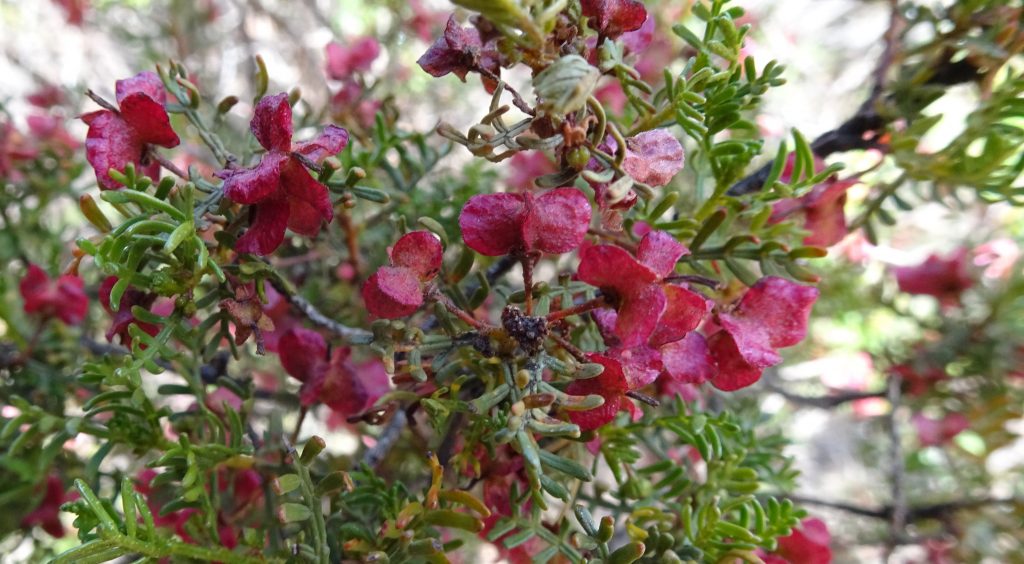
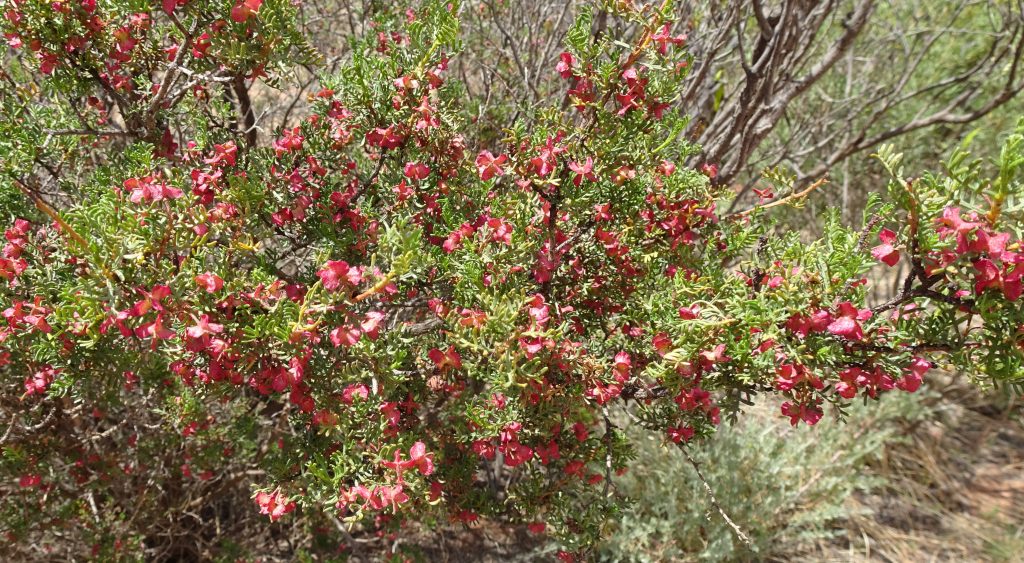
Peep Hill is not accessible to the public so any sightings of hop bushes would have to be made from roadside vegetation bordering the area. Although we did not see a sea of maroon fruiting plants, and I’m not sure that we were expecting to but rather hoping, there were some good examples of fruiting plants, when one looked. There was some variation in fruit colour between plants, from pale orange-yellow to deep maroon, and fruits were quite small and less abundant compared to the plants in my home garden, the pinnate leaves were smaller too and fruit predominately 4 winged, rather than a mix of 3-4 winged at home. Tea Tree Gully has higher rainfall and plants are irrigated once/week in the summer months. Local conditions in Peep Hill including rainfall are, I imagine, quite variable and likely influence timing, size and extent of flower/fruit in addition to occasional grazing of vegetation. Importantly there was a good mix of healthy, younger plants amongst older, woody (and some declining) plants.
From my own urban garden perspective Dodonaea subglandulifera is easy to grow, very hardy and will reward you with colour in late winter and early spring months. It can become woody and scraggly if allowed to and does not recover very well if cut back hard to woody stems, and more particularly if grown in a shaded aspect. Suggest to plant in full sun and trim after fruiting in late spring to encourage new growth and bushiness. Great as a low, informal hedge, mass planted or specimen plant.
Words and images – P Vreugdenhil
